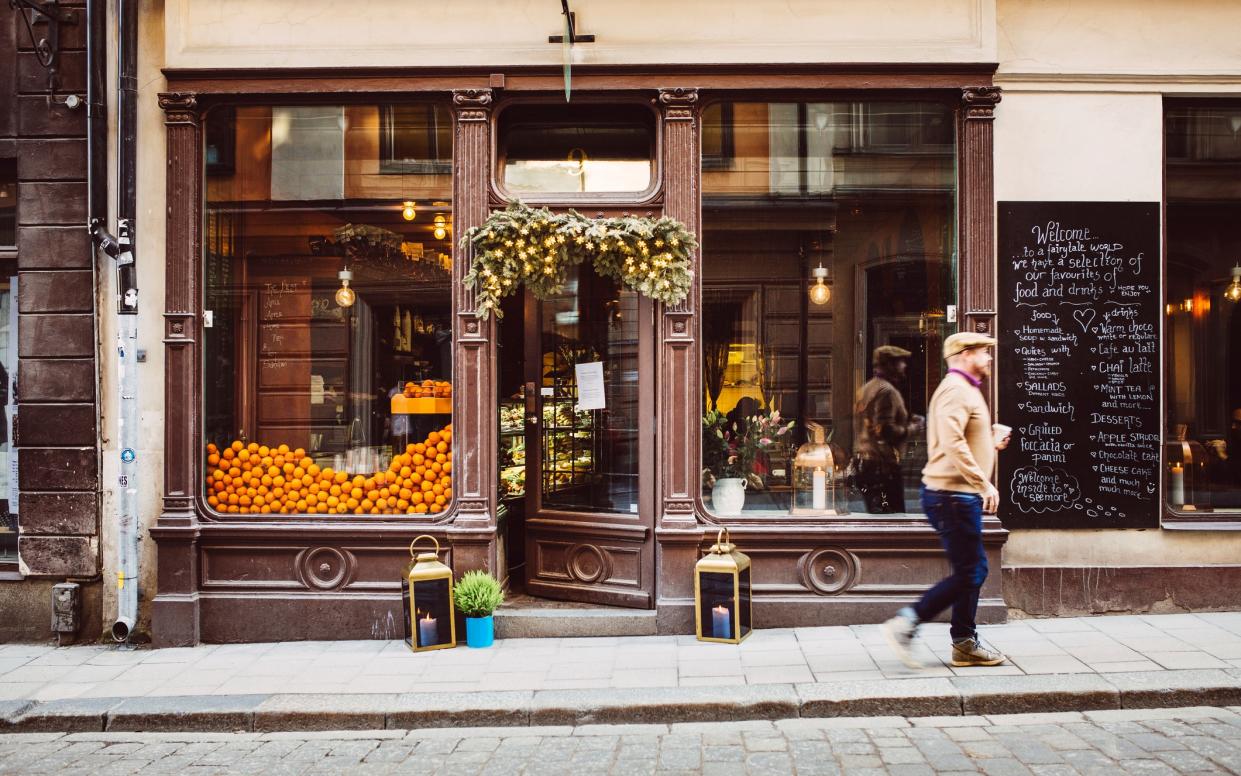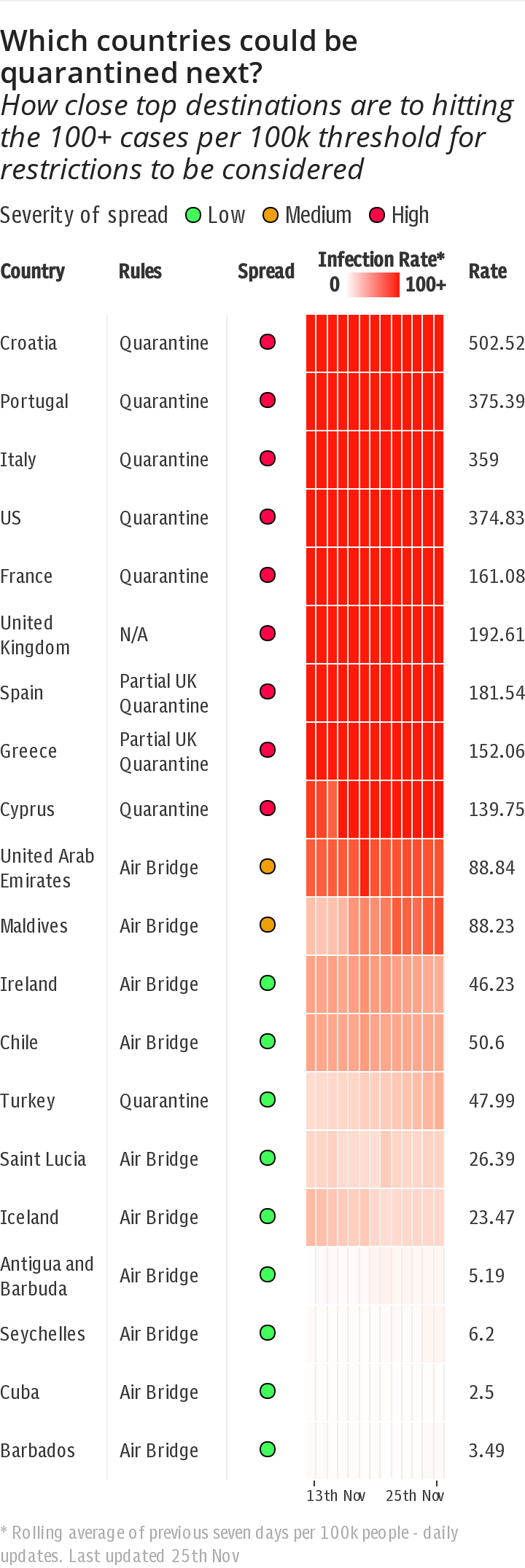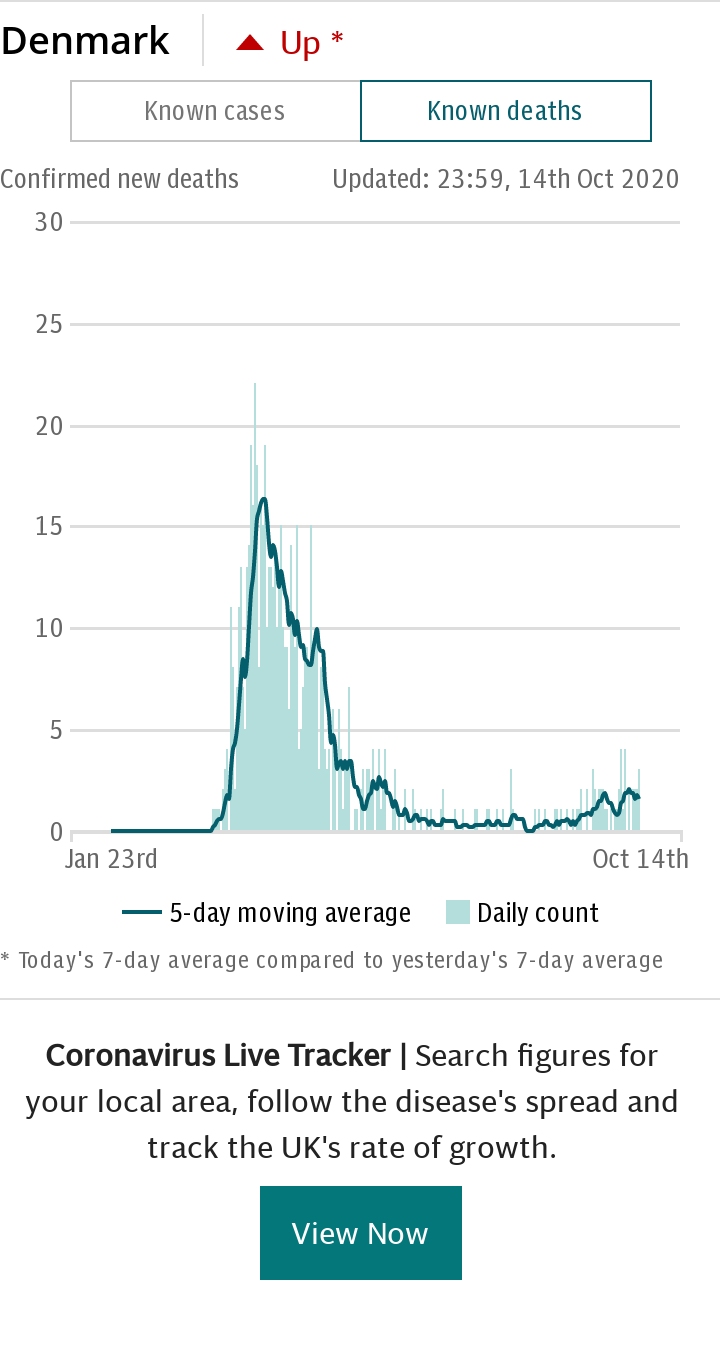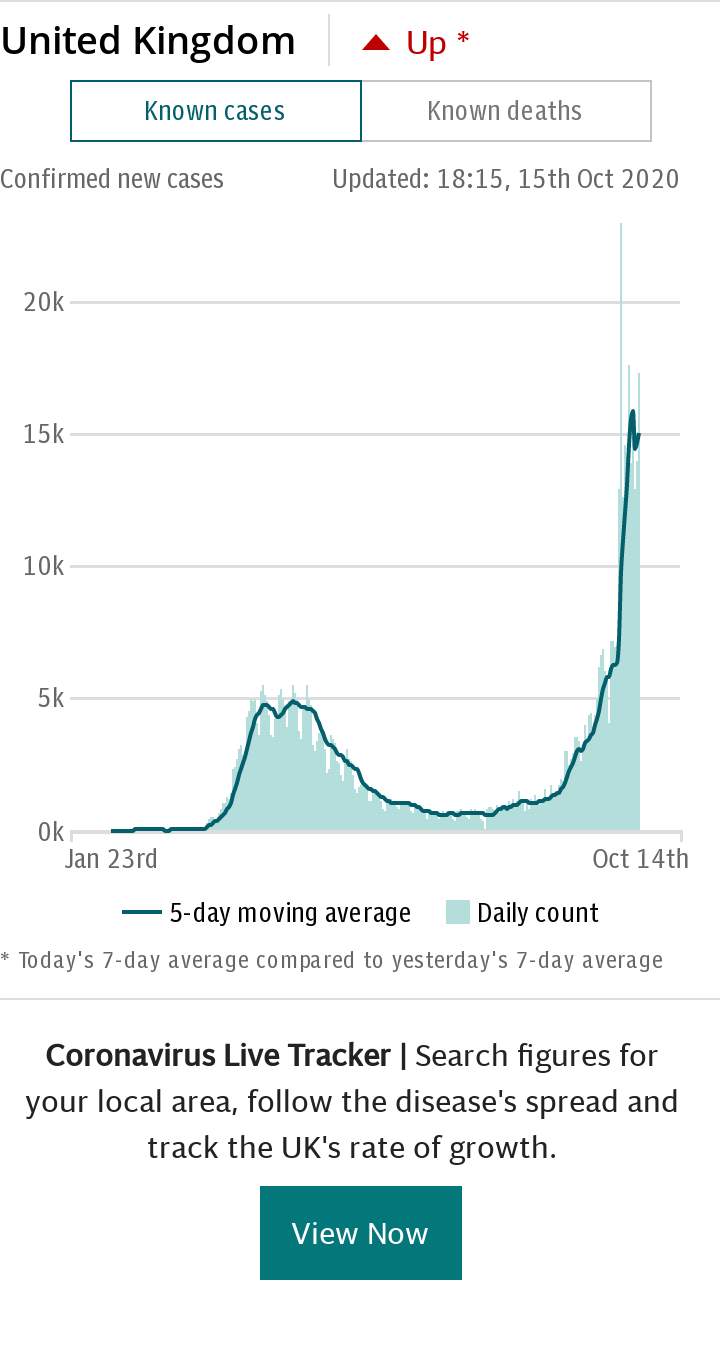Is lockdown-free Sweden winning in Scandinavia?

“We’re playing the long game.” That’s what Malmo resident Joanna Le Pluart told Telegraph Travel back in April as Sweden faced a barrage of international criticism for its lockdown-free strategy.
Back then, the country was seeing more coronavirus cases and Covid-related deaths per capita than most other European countries – and far more than its Scandinavian neighbour Denmark.
Fast forward five months and Sweden’s “long game” looks to be paying dividends. While Denmark is at risk of being added to the UK’s quarantine naughty step, with a seven-day case rate of 38.4 per 100,000 residents (the figure for the UK is 32.6), Sweden sits pretty on the green list with a rate of just 16.1.
Furthermore, where Denmark is responding to a rise in cases with fresh rules, the government in Stockholm is easing the few restrictions it imposed to tackle the pandemic.
So which of the two nations “won” the Covid battle? It’s still far too early to say. “Judge me in a year,” said Sweden’s state epidemiologist, Anders Tegnell, back in July. But having been written off by many, the benefits of Sweden’s laissez-faire policy are becoming increasingly apparent.
Below we compare each nation’s Covid strategy (with Britain’s thrown in for good measure) and outcomes.

How the strategies compare
Lockdown
Denmark
Quick and light. Denmark was quick to enter lockdown (March 13), but also quick to leave, with schools reopening in April and cafes and restaurants in May. Furthermore, its lockdown rules were not as strict as Britain’s. The strategy protected it from widespread deaths and minimised the economic damage, but seems to have left it more susceptible to a fresh rise in cases.
Sweden
Non-existent. People were asked to work from home, and advised to follow social distancing and hygiene guidance, but were not compelled to do so by the government.
UK
Strict and long. After a few days of dithering, and its brief flirtation with a more laissez-faire “herd immunity” policy, Britain went into full lockdown on March 16. By this time the virus was already widespread (indeed, the UK had already passed its infection peak), so Britain ended up with the worst of both worlds: a high death rate and terrible economic damage. The fiscal disaster was compounded by the slow release from lockdown, with restaurants not reopening until July.
Social distancing rules and masks
Denmark
Moderate. The Foreign Office states: “Specific guidelines on physical distancing, health protection and business opening hours still need to be followed and there are restrictions on the number of people that can be present at indoor and outdoor gatherings.
“Local restrictions are now in place for Greater Copenhagen and Odense. The number of people that can gather has reduced from 100 to 50, up until 22 September (Odense) and 1 October (Greater Copenhagen). In Greater Copenhagen, bars, cafes and restaurants will close at 10pm (midnight for the rest of Denmark), and you will need to wear a facemask when not seated (e.g. when queuing for the bathroom), in effect up until 1 October. Nightclubs remain closed.
“The Danish authorities have issued recommendations for travellers using public transport, including avoiding travelling during rush hour. You must wear a face mask on public transport, including taxis and ferries.”
Sweden
Sensible. No gatherings above 50 people (though that limit could soon be raised to 500) and (until October) no visits to care homes. In terms of rules, that’s about it. And you don’t need a face mask. However, people are encouraged to avoid unnecessary contact and work from home where possible.
Stockholm resident Maddy Savage, writing for Telegraph Travel, explains: “The first thing any would-be tourist here will notice is the lack of masks. They’re requested at Swedish airports but aren’t compulsory on transport, in shops, hairdressers or indeed any part of public life. A recent major poll found just 6% of Swedes currently use them. Anders Tegnell, the country’s state epidemiologist, has said he might reconsider things if there’s a renewed increase in cases, but he’s repeatedly argued that hand-washing and social distancing remain more effective barriers against the virus.”
UK
Ever-changing. Masks weren’t required, then they were. We were told to Eat Out to Help Out, then told off for socialising too much. Local lockdowns are becoming increasingly common, and the Government has now made it illegal to meet up with more than six people, putting family holidays and festive celebrations at risk.

Travel restrictions
Denmark
Moderate. If you are a Danish national and/or resident in Denmark, you can come and go as you please. For foreigners, the rules on entry depend on whether you are arriving from an ‘open’ country or a ‘banned’ country. As with the UK, case rates are a key factor. The UK is currently on the ‘open’ list (along with the likes of Italy, Germany, Greece and Portugal).
Sweden
Minimal. Like other EU countries, Sweden has banned entry to non-EU and non-EEA citizens arriving from outside of the EU. There is no quarantine on arrivals, including returning holidaymakers, even those coming from Covid hotspots like Spain.
UK
Overcomplicated. Travel corridors, air bridges, quarantine… don’t get us started.
Which strategy worked?
Covid deaths
Total Covid-related deaths
Denmark: 633
Sweden: 5,860
UK: 41,684
Deaths per million
Denmark: 109
Sweden: 580
UK: 614
There is no escaping the fact that lockdown-free Sweden has suffered far more Covid-related deaths, per capita, than its Scandinavian neighbours. However, Sweden’s figures are dramatically skewed by its failure to protect its care homes. Around three-quarters of the country’s Covid fatalities were in these facilities – remove them from the equation and the disparity isn’t quite so stark (Sweden has also still seen fewer Covid deaths per capita than the UK).
Furthermore, the final verdict will come many months (or even years) from now, when comparable total excess deaths figures are available. It isn’t just deaths from Covid that matter, but deaths due to lockdown (missed cancer treatment and screenings, for example) and economic recession. The jury is still out.
Current seven-day case rates
Denmark: 38.4 per 100,000
Sweden: 16.1
UK: 32.6
Back in March, SAGE scientists warned that nationwide lockdowns were not a long-term solution to the pandemic. Once restrictions are lifted, a spike in cases is sure to follow. It would merely delay the inevitable. Low and behold, Europe is experiencing a sharp rise in cases – due, in no small part, to much more testing – with those countries that had the strictest restrictions, such as Spain (where the case rate is a whopping 146.9), seeing some of the biggest increases.
However, Sweden’s numbers have fallen in recent weeks. Many believe this is down to higher levels of immunity among the Swedish population.
“We don’t have the resurgence of the disease that many countries have,” Anders Tegnell told broadcaster France 24 this week. “In the end, we will see how much difference it will make to have a strategy that’s more sustainable, that you can keep in place for a long time, instead of the strategy that means that you lock down, open up and lock down over and over again.”



Economic damage
Again, it is too early for a final verdict, but the early numbers certainly tell a story.
Denmark
The country’s GDP fell by 7.4 percent in the second quarter of 2020, a testament to its quick lifting of lockdown restrictions.
Sweden
The lack of lockdown didn’t completely shield Sweden from economic pain: a drop of 8.6 percent was seen in Q2. Given its economic ties with the rest of Europe, this was inevitable. However, Sweden’s economy still outperformed many of its European counterparts (including Britain).
UK
How bad? Very bad. Down 20.4 percent in Q2.
‘Back to normal’ rating
The need for normality, for the sake of our mental wellbeing, if nothing else, should not be underestimated. We are sociable creatures, and our children need an uninterrupted education.
Denmark
It remains a more “normal” holiday option, with none of the draconian mask rules you’ll find in, say, Spain, but the rise in cases in Denmark is forcing it to act.
Hospitality venues in Copenhagen have been ordered to limit their opening hours, for example (they must now close at 10pm).
Sweden
As mentioned above, while the rest of Europe is playing whack-a-mole, tackling fresh outbreak with the mallet of local lockdowns, Sweden is easing restrictions. Its limit of gatherings could soon be raised from 50 to 500, and from October visits to care homes will be permitted. Anders Tegnell described the move as “completely reasonable since transmission has decreased radically recently, and it’s obvious that knowledge and routines have improved greatly.”
Maddy Savage adds: “For now, the lack of masks means Stockholm certainly looks and feels significantly more ‘normal’ than most European capitals. Yet it’s a myth that life hasn’t changed in Sweden. In restaurants, expect table-service only – ordering at bar counters stopped in March, in an effort to stop mingling. Venues might have a DJ, but dancing’s not allowed, and major nightclubs have temporarily closed or, like the city’s hipster concrete mega-venue, Trädgården, pivoted into restaurants. Swedes’ working lives remain different too. They’ve been asked to do their jobs from home until at least the end of the year if they can, although there are no official figures on how many are actually following the guideline.”
UK
Is banning Christmas normal? Britons can’t gather in groups of 50 or 500. They can’t gather in groups of seven. A curfew, in peacetime, could be next.


